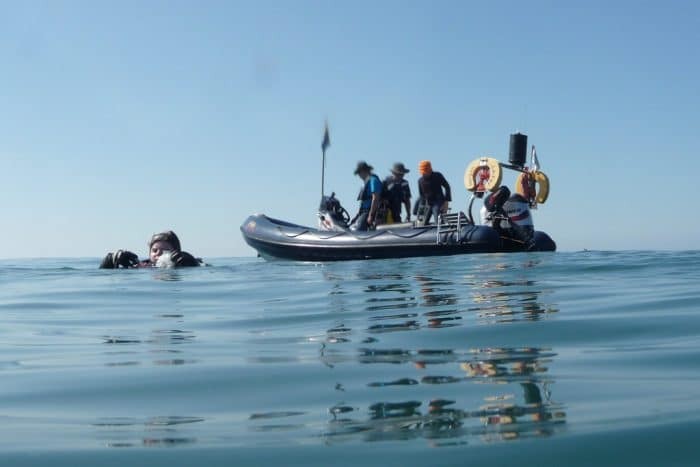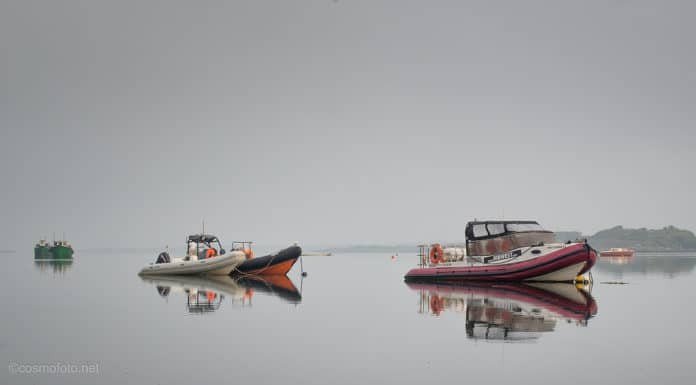Action movies love to show us divers hanging on to a high-speed inflatable and dropping into the water to attack their enemies. Inflatable boats and Rigid Inflatable Boats (RIB) are a favorite for many types of military activities as well as law enforcement and Search and Rescue activities. The versatility and benefits these boats provide to those organizations often appeal to scuba divers as well.
Inflatables
The development of both the inflatable boat and the RIB are generally accredited to the Zodiac Nautical company or at least its predecessor. Zodiac was founded in 1896 as a builder of airships. In the 1930s the company developed an inflatable prototype boat to meet a need of the Aéronavale, France’s Naval Aviation service. That started the company to build inflatable for military and later commercial uses. In the 1960s, the company expanded its offerings to include recreational purposes. In many places, the term zodiac is used to mean any type of inflatable boat just as the brand Kleenex is often associated with any facial tissue.
The basic design of an inflatable is that of a flat bottom boat with the sides being filled with air. These tubes form the hull of the boat. Generally, riders will sit on the air tubes and hold on to ropes or handholds. Inflatables are known for stability and have very little draft. This means they can go where traditional boats cannot. Also, given their lightweight, they can easily be carried into and out of the water. Modern inflatable often will have an aluminum floor and mounts for an engine. Most inflatables will fit on the roof of a full-size car, or can often be broken down and carried inside of the car.
One manufacturer of inflatables lists their different models with a notation of storage. According to them, their 11-foot soft floor model can be stored in a closet of your apartment. That does not include the motor.

Rigid Inflatable Boats (RIB)
The Rigid Inflatable Boats uses the strength of a conventional hull and adds the stability of an inflatable’s buoyancy tubes. The combination gives a high-performance vessel that not only provides a safe and stable ride but is easier to trailer than a conventional boat of the same size. The purchase price is lower than a conventional boat and is less costly to operate. If you have not had exposure to a variety of RIBS, you may not grasp the scope of uses and the sizes that are available. The stability of the RIB along with their light weight makes the concept ideal for a number of specialized uses.
The early adopters of the RIB design were military. These boats were ideal for patrol activities that could be used in shallow waters as well as blue waters. When configured for high performance a RIB can exceed 100 km/h, This also is perfect for search and recovery operations.
The term RIB refers to the design. The manner the boat is configured, the hull shape and power provided with determining how suited the design will be for your use. You will most likely see dive configured RIBs in the range of 4 meters to 10 meters. A 4-meter long boat may be just perfect for you and your dive buddy and your surface support. Many will even allow another buddy team to tag along. The ASIS 9.5 meter Diving boat is rated for 20 divers. When equipped with the largest acceptable 700 hp outboard, it will get the divers to the dive site at up to 121 km/h – 75 mph.
If you are a poor driver, remember that a low-speed impact will not damage your boat. The air tubes will act as a bumper and push you away before the boat and the item you hit are damaged.
Regional Use
My personal observation, The usage of Inflatables and RIBS are more common where the sea conditions are the most unpredictable and severe. I have seen a good number of RIBS around the UK and northern Europe. The speed and stability of a RIB are factors that stand out in the local waters there. Many dive clubs there, own their own. The lower cost to purchase and maintain make them ideal for club ownership. In South East Asia and the Indo-Pacific, The only RIBS I recall were used by liveaboards. Generally, dive centers in this region use modified local boat designs. The dive centers will cancel diving for severe sea conditions, conditions that U.K. divers would consider moderate.
How to dive?
The back roll is the most common entry from an inflatable and from RIBS with a low freeboard. On smaller boats, it is common for divers to enter the water from opposite sides at the same time. This will limit the sideways motion as the weight is shifted. The larger the boat and the wider the beam lessens the need for this. Some larger boats may have a platform for a giant stride.
Dive boats will generally have a small ladder that fits around the air tube that is unfolded to allow divers to climb back on board. I was on one liveaboard that used an inflatable to pick up divers after the dive. They called it a “combat” pick up. The pickup boat pulled a floating line behind it and the diver just grabbed a handhold and was towed back to the liveaboard. An interesting ride.
The ride is also something that you may find different about a RIB vs a conventional boat. These boats can come up on a plane in a shorter period of time and can provide a faster ride. If you are sitting on the tube, it may be a thrilling ride, bouncing in rough conditions while at the same time the handholds provide for a safer trip.
If you have never dived from a RIB nor Inflatable add it to your bucket list. If you are considering getting your own dive boat, these are certainly something you should look into.
If space is a problem, you can get a smaller one and store it inside your apartment.


